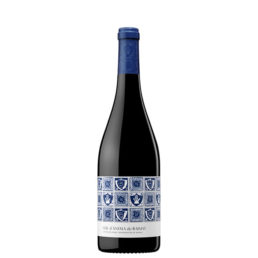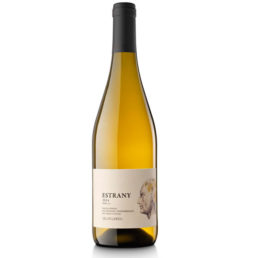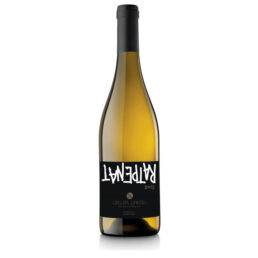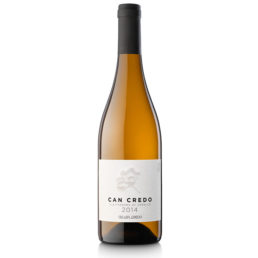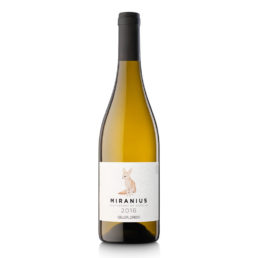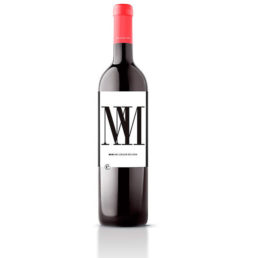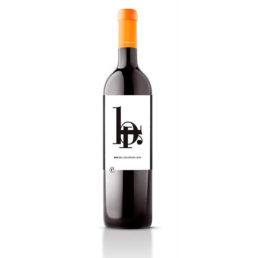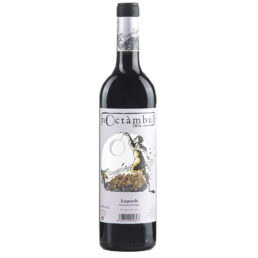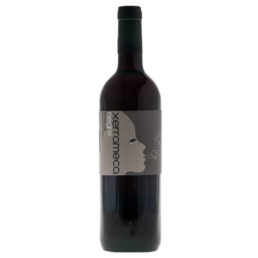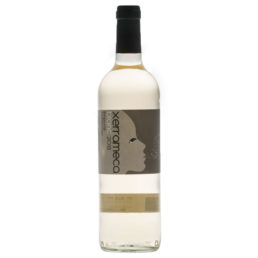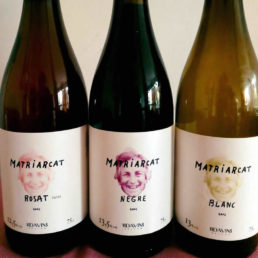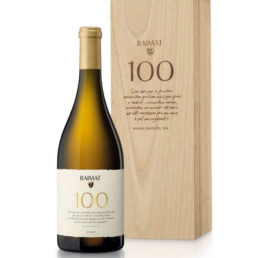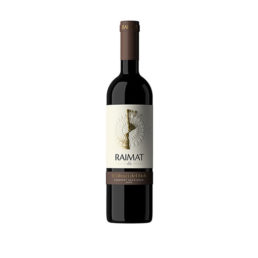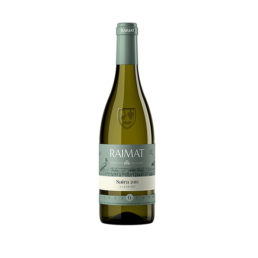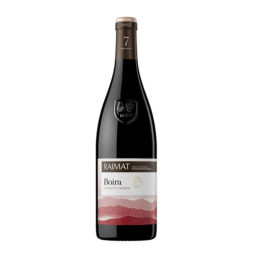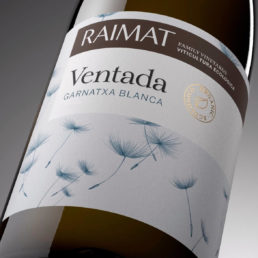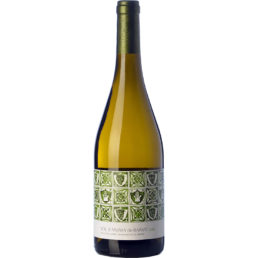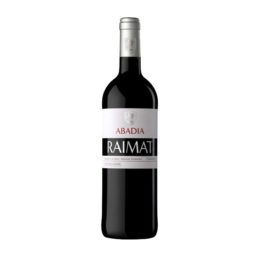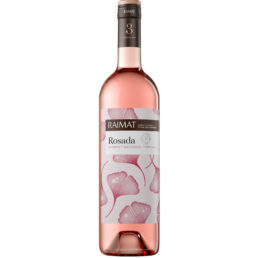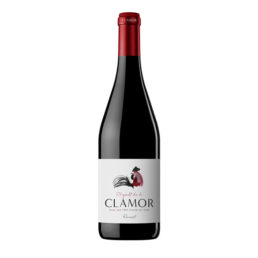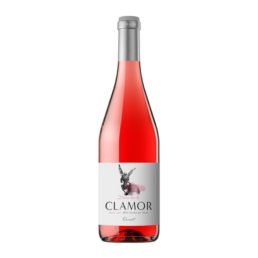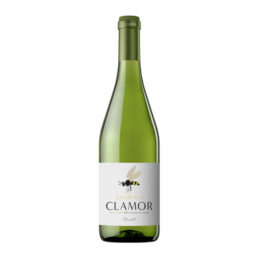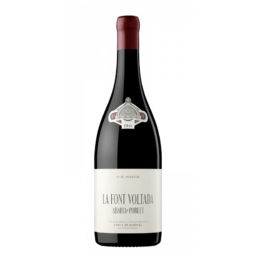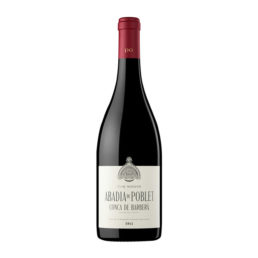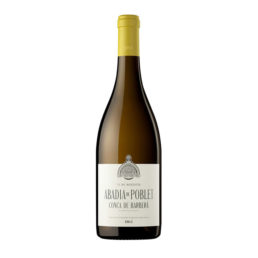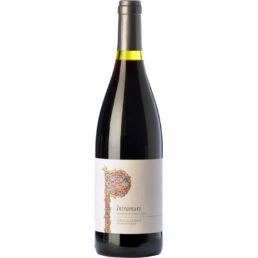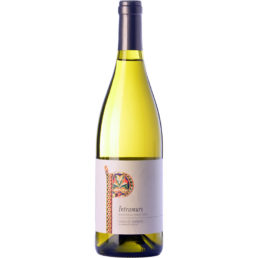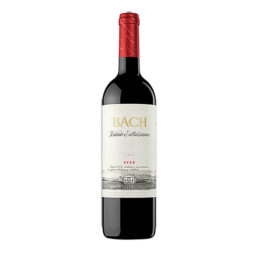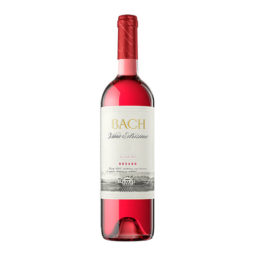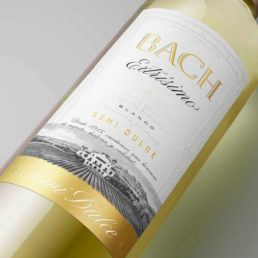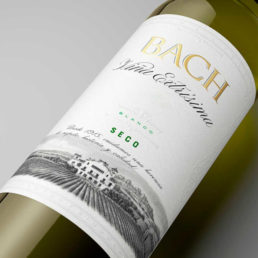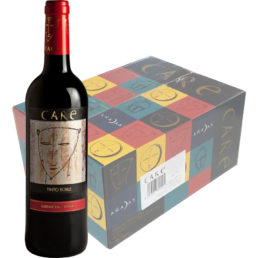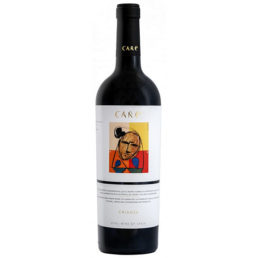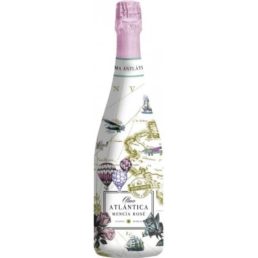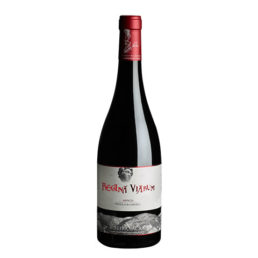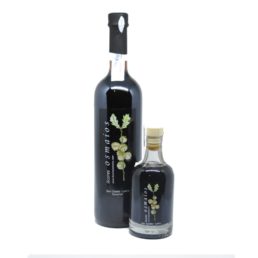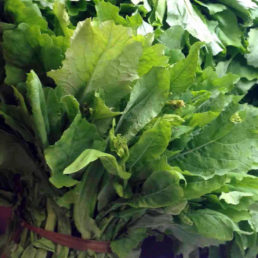wineries
-
Red wine Vol d’ànima de Raimat
Vol d Ànima, formerly known as Ànima de Raimat, it is the culmination of our first 100 years of history. The tiles that dress up your tag are the same that look in the walls of the castle of Raimat from 1935, after the reform carried out by the architect Rafael Masó. This creation represents the soul of Raimat: a young red wine, modern, fresh, medium-bodied, with notes of cocoa, developed with the 3 red varieties that best express the terroir cellar: Cabernet Sauvignon, Tempranillo and Syrah.DEVELOPMENT (VINIFICATION)It starts with a grape harvest at night to preserve the primary aromas of the fruit.When the grapes reach the cellar, is cooled to a temperature of 15 ºC.A part of the grape is vinifica looking for a profile of the wine more fruity and fresh. Is achieved by keeping the temperature low for 24-48h and fermenting later 25 ºC. The other part of the grape is fermented at a higher temperature for greater texture and complexity in the wine. These two styles came together we offer a young red wine, modern, with lots of fruit and structure in the mouth.PAIRINGVol d Ànima de Raimat Red wine can accompany well to dishes of hunting, mushrooms, meats and legumes, as well as sausages and rice. It is a wine that is very versatile. -
Vino blanco Celler Credo – Capficat
‘Capficat’, branch that is buried –and without cutting it from the plant from which it comes– gives life to a new strain.The white wine Capficat comes from the vineyard Serral del Bosc, soils, extremely calcareous and loamy texture (balance between arenas, silts and clays). It comes from a vineyard owned own located in the comarca of the Alt Penedès and cultivated according to the principles of organic farming and biodynamic.We work the vineyards, leaving to grow a ground cover spontaneous, important to fluff up the soil and regulate the retention and the drainage of water in a rainfed cropping as that practiced. This cover is essential to promote biodiversity and balance in the ecosystem of the vineyard, where we apply treatments with medicinal plants (phytotherapy) to control the presence of fungus and strengthen the strains of a totally natural way. The grape harvest at Celler Credo is carried out always at hand to ensure the excellent quality of the cluster.Capficat is a praise to the purity and transparency. Does not contain sulfites added, only sulfites own the yeasts generate naturally during the fermentation (<8 mg/l). This is a wine that puts a value on the quality of the grapes and the work from the vineyard. Fermentation –starting yeast from our vineyards– is made in oak barrels used, where the wine remains for a period of approximately a month and a half.Capficat look for the maximum expression of the terroir and, therefore, you can present natural sediments the result of a minimal intervention. The vinification and the bottling are done in our property. -
White wine Celler Credo – Estrany solidari
The wine Estrany solidari comes hand in hand with the project www.veremasolidaria.org (Vendimia solidaria) an initiative of the 2017 in collaboration 200 people and that aims to unite the wine and social responsibility to raise funds for organizations that fight poverty and social exclusion. -
Vino blanco Celler Credo - Bat
Enigmatic and unknown, but it is absolutely necessary for the balance of the ecosystem. The bat is the only mammal flying that exists on the Earth. Their biology, highlights the longevity (you can live to be more than 40 years old) and aradar system that allows you to fly at night.The white wine Ratpenat (bat) born of compromise between Celler Credo and the Museu de Ciències Naturals de Granollers for the defense of the environment and the living beings that inhabit it. The 60% of the benefits of this wine are allocated to projects that aim to disseminate the importance of the bat in the ecosystem and theconservation of this mammal in the vineyard environment as an efficient natural insectivore.Ratpenat is made exclusively from family vineyards located in the comarca of the Alt Penedès (Barcelona) and cultivated following the principles of organic farming and biodynamic. We work with plant cover spontaneous (essential to sponge the soil and regulate the retention and drainage of water in a crop ofdry land like the one we practice) and we apply treatments with medicinal plants (phytotherapy) to control the presence of fungus and strengthen the strains of completely natural way.The harvest is performed by hand and in boxes to ensure the excellent quality of the clusters. Both the vinification as the bottling is done in our property.During the development of Ratpenat, we run a job of maceration with the skins and stems for a few hours. The fermentation is done in oak barrels and old, later, it remains in the same barrels for a period of time of approximately a month and a half. This wine can present sediments completely natural result of a minimal intervention. -
White wine Celler Credo – Can Creed
Can Credo is the name by which is familiarly known in our house.Can Credo comes from a single vineyard family located on the farm of Pedra Blanca, in the region of Alt Penedès, and cultivated according to the principles of organic farming and biodynamic.We work the vineyards, leaving to grow a ground cover spontaneous, important to fluff up the soil and regulate the retention and the drainage of water in a rainfed cropping as that practiced. This cover is essential to promote biodiversity and balance in the ecosystem of the vineyard, where we apply treatments with medicinal plants (phytotherapy) to control the presence of fungus and strengthen the strains of a totally natural way.The grape harvest at Celler Credo is carried out always at hand to ensure the excellent quality of the clusters. Before pressing, the grapes destined to the production of Can Creed goes through the selection table manual.Balanced and deep, Can Credo expresses the personality of Xarel lo in a free and transparent way. During the development, maceramos the skins of the grape, and we apply a performance-pressing very low, which represents the fraction more subtle, the must. Fermentation - from yeasts from our vineyards - is carried outin used oak barrels, where the wine remains for a period of approximately two months.You can submit sediments completely natural result of a minimal intervention. The vinification and bottling are always carried out on the property. -
Vino blanco Celler Credo – Aloers
It was called ‘Aloers’ to the farmers of the Middle Ages who were the owners of the land that they cultivated. The aloers were free of any provision or census.The white wine Aloers come exclusively from the family vineyards of the Pedra Blanca, located in the comarca of the Alt Penedès (Barcelona) and cultivated following the principles of organic farming and biodynamic.We work the vineyards, leaving to grow a ground cover spontaneous, important to fluff up the soil and regulate the retention and the drainage of water in a rainfed cropping as we practice.This cover is essential to promote biodiversity and balance in the ecosystem of the vineyard, where we apply treatments with medicinal plants (phytotherapy) to control the presence of fungus and strengthen the strains of a totally natural way.The grape harvest at Celler Credo is carried out by hand to ensure the excellent quality of the clusters.Aloers provides the freshest and most genuine expression of the Mediterranean variety Xarel lo grown in calcareous soils.. It is a wine of great vitality and a long journey in a bottle.Produced from the maceration for a few hours with the stalks and to work with the lees during the time of approximately a month and a half. The fermentation takes place with yeast own from the vineyards of Celler Credo.Aloers look for the maximum expression of the terroir and, therefore, you can present natural sediments the result of a minimal intervention. The vinification and the bottling are done in our property. -
White wine Celler Credo – Miranius
‘Miranius’, fox savvy that goes into our vineyards and is delighted with the sweet scents of the grapes.The white wine Miranius comes exclusively from own vineyards located in the comarca of the Alt Penedès (Barcelona) and cultivated following the principles of organic farming and biodynamic.At Celler Credo, we work the vineyards, leaving to grow a ground cover spontaneous, very important to fluff up the soil and regulate the retention and the drainage of water in a rainfed cropping as that practiced. This carpetplant is essential to promote biodiversity and balance in the vineyard ecosystem. Also, we apply treatments with medicinal plants (phytotherapy) to control the presence of fungi and reinforce the strains of atotally natural way.The grape harvest takes place always at hand to ensure the excellent quality of the clusters.Miranius is a wine that is lively and deep, that provides great vitality and capacity of aging in the bottle. Developed 100% with the Mediterranean variety Xarel lo, Miranius has a marked varietal character with an acidity very alive and a good step in the mouth. To achieve this, at Celler Credo we work with yields very low in the vineyards, dedicatingspecial attention to ripening and always with the idea of obtaining natural and fresh acidities. The fermentation takes place with yeast own from the vineyards of Celler Credo.This wine can present sediments natural result of a minimal intervention. The vinification and the bottling is done entirely on our property. -
Wine red Mim's Celler de l'era
Elaboration: our wines are produced with grapes conreadas in our own vineyards, harvested by hand in boxes 10 to 15 Kg. The grapes are hand selected in the table vibrated. Each variety is fermented separately in stainless steel vats i it makes parenting later in barrels of French oak 225 liters of fine-grain i toasted light.
Pairing: red meats and hunting, rice (mountain, mushrooms and foie) and stews.
-
Red wine Bri of the Celler de l’Was
Elaboration: Grapes sourced only from the estate of Mas de les Moreres. Harvested by hand in boxes 16 kg. The first selection, is drift, and it makes a second selection grain by grain. Fermented in stainless steel tanks and maceration of 22 days up to the pressing. Parenting 12 months in new French oak barrels of 225 liters, fine grain and medium toast light.
Bottled: July 2013
Pairing: It is a wine that goes with rice (mountain, mushrooms and foie) and stews.
-
White wine Bri of the Celler de l’it Was Blanc de Negre
Elaboration: Manual harvest with boxes of 10-15 kg. De-stemming and maceration 4 hours in cold, bleeding and fermented in stainless steel tanks with temperature control to a maximum of 20ºC. Clarification spontaneous and cold-filtration is very soft to eliminate potential particles in suspension.
Bottled: April 2017
Food pairing-gastronomy: Dishes of japanese cuisine such as sushi, fish grilled, seafood, and also cheeses can accompany perfectly, as well as dishes with a salty point will be a great combination. -
Red wine Noctàmbul
Aged 6 months in american oak barrels. -
Red wine Xerrameca
Young wine fermented at a controlled temperature. -
White wine Xerrameca
Young wine fermented at a controlled temperature. -
Vino tinto Vidavins Matriarchy
Red wine elaborated with grapes of the varieties Cabernet Sauvignon, Merlot, Tempranillo, Grenache and Brocada, the winery Vidavins located in the region of Pallars Jussà, Figuerola d Orcau (Lleida). -
Vino blanco Vidavins Matriarcat
White wine elaborated with grapes of the varieties Macabeu and Monastrell, the winery Vidavins located in the region of Pallars Jussà, Figuerola d Orcau (Lleida). -
White wine Raimat 100 Wooden case 2013 – 2015
All of our history captured in a single wine. Raimat 100 commemorates the centenary of the winery with the best of our experience and the unique personality of our environment. Wine stores only, of great complexity and elegance, with different orveles texture; profound and long-term, worthy of collectors. The result, a vintage white a singular of international prestige.DEVELOPMENT (VINIFICATION)In the development of Raimat 100 the grape is pressed manually by extracting to a maximum of 50% of the must and goes directly to new French oak barrels where it ferments at a controlled temperature of 16 ºC, part with natural yeasts. A percentage of the must is clarified (to give finesse and length) and the other is not clarified (to give texture). A parenting 6 months on lees with battonage weekly to give creaminess and malolactic fermentation in a small proportion of them.PAIRINGRaimat 100, a white wine ideal companion for meats and poultry, seasoned with honey, tarragon, vanilla, nuts. Ideal with shellfish and cream sauces, or butter.PRIZES ADD 201394 POINTS GUÍA GOURMETS 201694 POINTS YEARBOOK OF WINES (THE COUNTRY) 201692 POINTS GUIDE PEÑÍN 2016SILVER MEDAL INTERNATIONAL WINE & SPIRIT COMPETITION - 2015SILVER MEDAL INTERNATIONAL WINE CHALLENGE - 2015 -
Red wine Raimat El silenci del molí
For more than 100 years ago an old windmill was working in the farm for a long time. As a tribute to this, appeared "The Molí", one of the best wines in the history of Raimat which revolutionized the wine world by introducing varietales international, such as Cabernet Sauvignon. Now, again, a new windmill to honor its precedents, a red wine subtle but great character, developed 100% with the variety flag of Raimat.DEVELOPMENT (VINIFICATION)We selected the best farms D. O. Costers del Segre Cabernet sauvignon Raimat, to make this single variety red wine. It was cold pre-fermentation maceration to enhance the fruit aromas and to obtain a better structure and color. The fermentation was carried out together with the skins in stainless steel tanks for 10 days at a controlled temperature between 25-28 ºC. During this time we were reassembled with different frequency and intensity, depending on the time of fermentation in which was, to be able to extract the best qualities of the grape. Once the fermentation is complete, we kept the contact with the skins to achieve a greater extraction of aroma, color and structure.After the maceration posfermentativa, we separated the wine from the skins, is prensó and subsequently started the malolactic fermentation. Part of the Cabernet made the malolactic fermentation in barrel and part in stainless steel tank, to have different fractions that add up to make the blend that we currently have.PAIRINGRaimat El Silenci del Molí is the perfect companion for red meats in sauce, chocolate, or black fruits, as well as desserts of chocolate mousse and red fruits, biscuits with dried fruits and jams but without cocoas pure, since the tannins overall would be very high. -
White wine Raimat Saira Albariño
The sustainable vineyards and the ecosystem become the finca Raimat in a true paradise for birds. Saira is one of the towns closest to the farm, and where it is very common to see nests of birds during time of migration. Symbolizing this event we baptize this albariño with your name, Raimat Saira Albariño, a tribute to the storks common in Raimat and its surroundings. A white wine original that maintains the typical characteristics of the variety, providing nuances and complexity that give it a unique personality. DEVELOPMENT (VINIFICATION)The grapes of Albariño wine comes from two vineyards D. O. Costers del Segre is harvested separately when the maturation of each one is in optimal conditions. Each component is fermented in a different way to get texture and complexity. The plot more cold fermented at low temperature to obtain the component of citric acid. Creaminess comes from fermentations with lees battonage journal. The notes of vanilla and wood are the result of a fermentation in the barrel. Further, to achieve a greater complexity is to use a small percentage of a Strain reared for more than 10 months in barrel.The fermentations are carried out with selected yeasts. The wine is preserved in optimal conditions until the time of stabilization, filtering and bottling.PAIRINGRaimat Saira Albariño is the perfect complement to dishes containing white meat, fish, seafood, rice, and pasta. White wine is ideal for asian cuisines such as japanese and thai, tempura, grilled vegetables, also for appetizers such as anchovies, cockles, salpicón de pulpo, olives, etc. -
Red wine Raimat Boira
The vineyards covered by the fog are an unmistakable landscape of Raimat. Dense and white, it can be seen in almost every sunrise and sunset from the farm. A phenomenon that is very common but it never ceases to amaze. Raimat Boira cover your senses as the fog hugs the vines. Red wine elaborated from practices 100% ecological, from the vineyard to the glass.DEVELOPMENT (VINIFICATION)The grapes of the D. Or. Catalunya come to the winery quickly after vendimiado and followed a cold maceration around the 15 ºC to be able to extract the maximum fruit. The Grenache is fermented at a controlled temperature of 25-28 ºC in stainless steel tanks to favor the fruity, freshness and elegance of this variety; a small part is prepared at a higher temperature to provide a good tannin, color and aromas to the final blend. When fermentation has finished, is decanted to other deposits to make the malolactic fermentation. All the elaboration process of this wine follows the principles of organic production.PAIRINGRaimat Boira is ideal for raw meat as steak tartare sausages and cured meats, ham, cecina, longaniza and fuet. -
White wine Raimat Window
The wind has been found in Raimat a home. Present during all seasons of the year, it is an element that is very typical of our farm. The name of this white wine is a tribute to his steady pace through the vineyards. If you are looking for answers in Raimat, without a doubt you'll find them in the wind, in Raimat Window, a wine with elegance, delicate in the mouth but with body and unique personality, made from Garnacha blanca 100% ecological. As the wind that blows in the vineyards of the winery, transmits its force to your step.COLLABORATION (VINIFICATION)Looking to reach the highest expression of our Garnacha, the team of oenology has developed methods of processing natural and respectful for Raimat Window. We have avoided use practices that modify the natural expression of this variety, preserving primary aromas and avoiding oxidation of unwanted.With this wine, we can propose wine pairings such as crispy suckling pig with stewed apples, rolls of phyllo dough stuffed roast chicken, or mushroom risotto. Raimat Guy marries perfectly with fish baked or grilled and seafood, providing freshness, notes of herbs, touches of balsamic and white fruit. Even sausages, Catalan-style as llonganisses or sausage, white and black. -
Vino Blanco Raimat’s Flight of the Soul
Vol d Ànima, formerly known as Ànima de Raimat, it is the culmination of our first 100 years of history. The tiles that dress up your tag are the same that look in the walls of the castle of Raimat from 1935, after the reform carried out by the architect Rafael Masó. This white wine represents a new style in the house with the purpose of adapting to the new trends, with sustainable viticulture of the varietals that best express the terroir of the winery: Chardonnay and Xarel·lo.From the vintage 2019, Raimat Blanco's Flight of the Soul becomes ecological, betting on biodiversity, balance and respect for the earth.DEVELOPMENT (VINIFICATION)After pressing, the wort is cooled below 10 ºC so that the decanting static was able to preserve its primary aromas. Then, the must fermented at a controlled temperature of 16 ºC during 2 the 3 weeks. The three grape varieties are fermented separately. After the fermentation and clarification processes, the final mixture was made for Vol d'Ànima de Raimat Blanco Ecológico.PAIRINGVol d Ànima de Raimat Blanco is a wine that can pair with a wide range of foods, as can be caps (squid, squid, bravas, spatter, Russian salad, etc.), pasta and rice creamy, white fish and seafood. It is also great with birds. -
Red wine Raimat Abadia
Raimat Abadia is the wine most representative of the history and the essence of Raimat, the brand of wine oldest of the D. Or. Costers del Segre. Inspired by the work and the dedication with which the monks perform their tasks, this red wine reflects the vocation, the patience and the know-how of the Cellar. The first Abbey was drafted in the 1978 and since then, remains the emblem of the winery.DEVELOPMENT (VINIFICATION)It starts with a grape harvest at night to preserve the primary aromas of the fruit. When the grapes reach the cellar, it passes through a heat exchanger that lowers the temperature to 15 ºC, it will keep for 24-48h to make a cold maceration that will provide a wine that is more fruity and vivacious. After fermentará around 25 ºC. When fermentation has finished, sent this wine to stainless steel tanks for malolactic fermentation.PAIRINGRaimat Abadia is a good ally of dishes containing cheeses, vegetables, meats, legumes, or any type of pasta. -
Rosé wine Raimat Pink
In the finca Raimat is common to see the presence of roses in the vineyards. The rose is an ideal companion for the vid, as the roses help to detect early a disease that affects them. Every morning, the petals of all the rosas they refreshed by the dew of the morning giving us the most beautiful awakenings. This wine is a tribute to these facts. Raimat Pink is a wine of pale pink gloss, that is similar to the petals of the first rose of spring. Elaborated with the varieties Cabernet Sauvignon and Tempranillo, for this pink only intended the first must, the more fragile and delicate but at the same time, more elegant, fresh and aromatic.DEVELOPMENT (VINIFICATION)The harvest is performed at night, taking advantage of the lower temperatures and quickly, to preserve the primary aromas. To reach the winery, after de-stemming and once achieved a temperature of 10 ºC, the grapes are sent directly to the press to proceed to the extraction of a very soft. The methodology that we use in Raimat is unusual; the winemaker decides on the basis of the target color what percentage of the flower must be intended to this wine.Then, for this pink, only intended the first must, which is more fragile and delicate but at the same time, more elegant, fresh and aromatic. It, it ferments to 14 ° C to preserve all the aromatic complexity of the two varieties.PAIRINGRaimat Pink is the wine-gastronomic excellence, marries perfectly with blue fish (tuna, salmon or sardines), pasta dishes, pizza; rice, caps, salads vegetable, vegetables, with birds, of dark meat such as quail or pheasant. -
Red wine Raimat Clamor
Cry is the name given to the lower part of the mountain where they grow the vines that produce this wine.Their grapes are developed pink, red and white. A privileged spot of the finca Raimat which gives rise for years, one of the best-known wines of the house.Pairing
Perfect for dishes with cheeses, inlaid, ham, red meat, porcine, roast lamb and vegetables. Also with snails. -
Rosé wine Raimat Clamor
Cry is the name given to the lower part of the mountain where they grow the vines that produce this wine.Their grapes are developed pink, red and white. A privileged spot of the finca Raimat which gives rise for years, one of the best-known wines of the house.Pairing
Pair with vegetables, white meat, rice, soft cheeses and fish. Also with casual dishes such as pizza, fried and pates. -
White wine Raimat Clamor
Cry is the name given to the lower part of the mountain where they grow the vines that produce this wine.Their grapes are developed pink, red and white. A privileged spot of the finca Raimat which gives rise for years, one of the best-known wines of the house.Pairing
A perfect complement to chicken dishes or white meat, fresh salads, Fish, rice and pasta. -
Rosé wine Vineyards of Anna
DEVELOPMENT (VINIFICATION)The harvest is done in the night, taking advantage of the lower temperatures and quickly, to preserve the varietal aromas and prevent oxidation of unwanted. To reach the winery, is performed a pressing immediately after, during 24-48h to make a natural clarification at low temperatures. The winemaker decides on the basis of the target color what percentage of the flower must be intended to this wine, which is more fragile and delicate but at the same time, more elegant, fresh and aromatic.Once clean, the wort, is decanted into a stainless steel tank with cooling system for performing a controlled fermentation between 16-18 ºC. After the alcoholic fermentation, the wines are preserved in tanks, avoiding oxidation, until the time of bottling.PAIRINGVines of Anna Pinot Noir is the wine-gastronomic excellence, that marries with a large amount of dishes to perfection. A perfect complement to dishes that contain fish blue (tuna, salmon or sardines), rice, and pasta. Also Ideal pairing with salads, fruits, vegetables, with birds, of dark meat such as quail or pheasant. Ideal to enjoy by the glass with all kinds of caps. -
White wine Vineyards of Anna
DEVELOPMENT (VINIFICATION)The grapes of the Chardonnay comes from different plots, with different soils and exposures; the purpose is to achieve a mixture with multiple records, we provide texture, body, freshness and golosidad. This differentiation allows us to obtain a wine with exceptional qualities while retaining the expression of the fruit.The grape enters the winery during the night, at low temperatures, to preserve the aromas of the variety and avoid oxidation of unwanted. Is performed a pressing immediate, for after, during 24-48h to make a natural clarification at low temperature.Once clean, the wort, is decanted into a stainless steel tank with cooling system for performing a controlled fermentation between 16-18 ° C. After the alcoholic fermentation, the various tanks of Chardonnay are blended according to indication of the winemaker to get that final mix.PAIRINGVines of Anna Chardonnay is the perfect complement to dishes containing white meat, fish, seafood, rice, and pasta. Also ideal for asian cuisines such as japanese and thai, tempura, and grilled vegetables. -
Red wine Viña Extrísima Masia Bach
Masia Bach was founded early last century by the brothers Pere and Ramón Bach, manufacturers of tissues.They wanted to link the best cotton tradition with viticulture, giving the name of the best cotton “Extrísimo” tothe best vineyards where Masia Bach wines historically came from.Council of the winemaker It is recommended its consumption during the year following the harvest.Pairing It is a red wine-cut, the perfect ally for a wide range of dishes: vegetables and meats stewed or grilled, post, fish of firm flesh and fat, such as cod and tuna accompanied with sauces, rice dishes seasoned with meat, mushrooms stir-fried or stewed, sausages and semi-mature cheeses. -
Rosé wine Viña extrísima pink dry Masia Bach
Masia Bach was founded early last century by the brothers Pere and Ramón Bach, manufacturers of tissues.They wanted to link the best cotton tradition with viticulture, giving the name of the best cotton "Extrísimo" tothe best vineyards where Masia Bach wines historically came from.Winemaker's adviceThe wine is expected to reach its maximum fullness during the first year, keeping in good condition one yearplus. Store in a dry place without exposure to direct sunlight.PairingIdeal to accompany a multitude of dishes; from sausages, rice and pasta, until fish flesh as firm as monkfish,cod, tuna and white meat. -
White wine Extrísimo semi-Masia Bach
Masia Bach was founded early last century by the brothers Pere and Ramón Bach, manufacturers of tissues.They wanted to link the best cotton tradition with viticulture, giving the name of the best cotton “Extrísimo” tothe best vineyards where Masia Bach wines historically came from.Wine that gave fame to the winery. His soft palate and slightly sweet-it marked an era and with it a precedent of sweet wines of calidad.Su fruitiness has been enhanced by his stay in the barrel.Council of the winemaker It is expected to reach its maximum evolution in two years, staying in good condition for 5 years old.Pairing Perfect addition for baking, foie gras and blue cheeses. It is also a good accompaniment to snacks, seafood and fish stews. -
White wine Extrísimo seco Masia Bach
Masia Bach was founded early last century by the brothers Pere and Ramón Bach, manufacturers of tissues.They wanted to link the best cotton tradition with viticulture, giving the name of the best cotton “Extrísimo” tothe best vineyards where Masia Bach wines historically came from.The original blend of Chardonnay complemented by Xarel·lo and Moscato results in a white that fills the palate with freshness. It is a dry white with character, ideal to accompany any type of foodWinemaker's adviceIts consumption is recommended during the year after harvest. Serve between 8 10 ° C.Pairing Ideal complement to accompany appetizers, seafood, crustaceans, fish and white meats. -
The wine Care Tinto Roble 50cl. 2017
The wine Care Tinto Roble 50cl. 2017The different varieties were vinificaron separately given their different cycle of maturity. These grapes once being removed from their stems and without compressing, were the tanks fermenters conical stainless steel. After a cold maceration (9ºC) during 8 days, it underwent alcoholic fermentation with selected yeast, leaving to get the temperature to 24ºC. After the devatting or drawing off, the wine made the malolactic fermentation and after mixing the two varieties (50%) underwent a rest in new barrel of American Oak during 4 months. -
The Wine Care Tinto Roble
The Wine Care Tinto Roble 2017The different varieties were vinificaron separately given their different cycle of maturity. These grapes once being removed from their stems and without compressing, were the tanks fermenters conical stainless steel. After a cold maceration (9ºC) during 8 days, it underwent alcoholic fermentation with selected yeast, leaving to get the temperature to 24ºC. After the devatting or drawing off, the wine made the malolactic fermentation and after mixing the two varieties (50%) underwent a rest in new barrel of American Oak during 4 months. -
Wine Care Tinto Roble Magnum 2017
Wine Care Tinto Roble Magnum 2017The different varieties were vinificaron separately given their different cycle of maturity. These grapes once being removed from their stems and without compressing, were the tanks fermenters conical stainless steel. After a cold maceration (9ºC) during 8 days, it underwent alcoholic fermentation with selected yeast, leaving to get the temperature to 24ºC. After the devatting or drawing off, the wine made the malolactic fermentation and after mixing the two varieties (50%) underwent a rest in new barrel of American Oak during 4 months. -
Wine, Care Chardonnay 2019
Wine, Care Chardonnay 2017Care still in a good line, betting each year with this variety and every year surprises us with a potential of fruit that leaves us happy. White wine crystalline aspect, shows a pale straw yellow with greenish reflections. Aromas clean and intense, reminiscent of fruits and white flowers. Exotic. In the mouth, a lot of feelings of white fruit (apple, money), along with other tropical and light citrus. Excellent your end. Tasty and seductive with great balance.Obtaining of the must by bleeding after 10 hours of cold maceration (9ºC) with the skins. The alcoholic fermentation is developed in deposits conical stainless steel at a temperature of between 15 and 18°C. -
Wine Care Crianza
Wine Care CrianzaIn the drawing, performs a pre-fermentation maceration 6 days at a temperature of 10 ° c. The temperature of the fermentation is allowed to reach up to 26C. After the alcoholic fermentation, the wine remains in maceration with the skins during 15 days. The malolactic fermentation takes place in tank.Parenting during 12 months american Oak, native to the forests of Kentucky.












